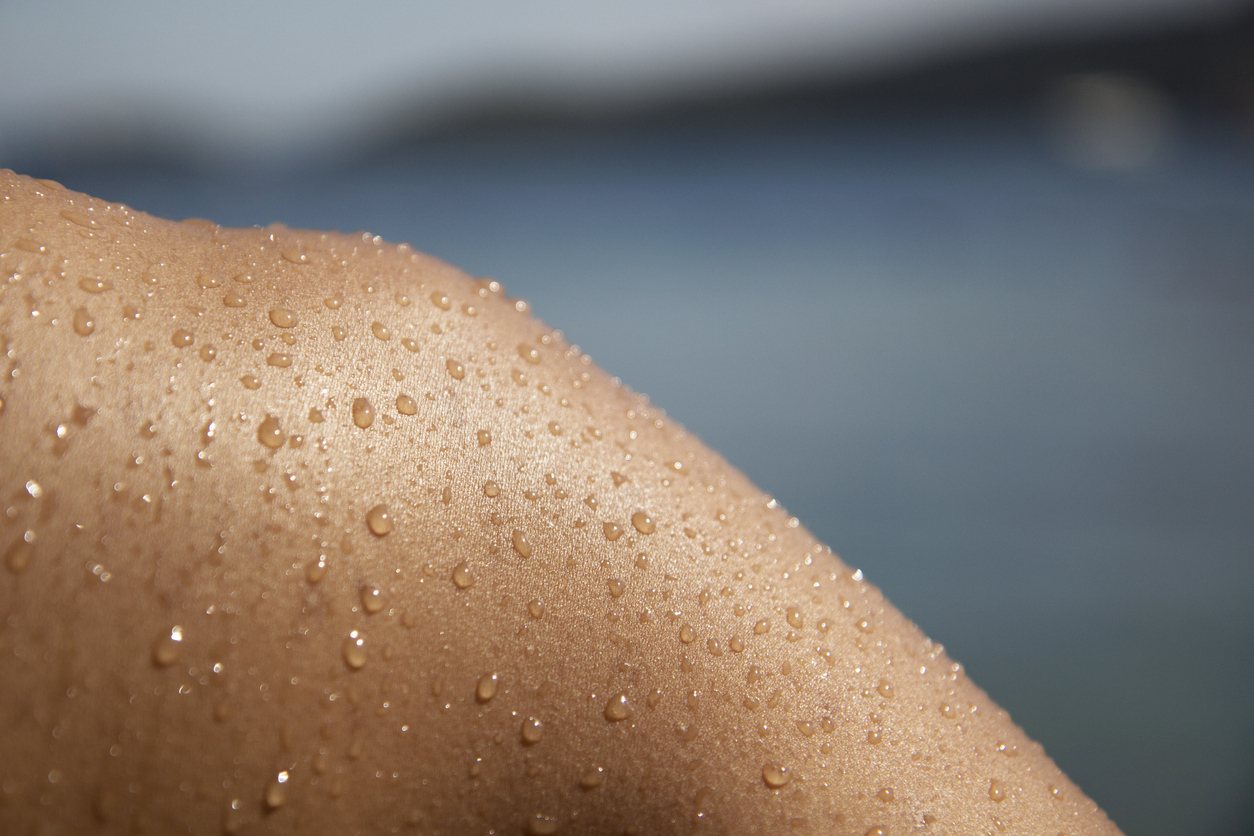One thing that many ostomates discover after stoma surgery is just how important skincare is. Keeping the skin around the stoma clean and healthy can help reduce the risk of irritations, pain, and infections.
But how much do we know about our skin, the hugely-complex and interesting organ that we sometimes take for granted?
Below, we’ll look at some fascinating facts about skin that you may be surprised to learn about.
1. It’s our largest organ
Making up roughly 15% of our own bodyweight, our skin is the largest organ of the human body.
Weighing in at around 22lbs and covering around 21 square feet of skin, the tissue that covers us contains, on average, around 11 miles of blood vessels – enough to cover the Strait of Gibraltar! Amazingly, a single square inch of skin also has in the region of 300 sweat glands.
2. It’s made up of three layers
Skin is comprised of three distinct layers, cloaking us in plenty of protection throughout the day.
The epidermis, the top layer, acts as a waterproof overcoat. The middle layer, known as the dermis, is a patchwork of connective tissue, hair follicles and glands, while the inner layer – the hypodermis – consists primarily of fat and connective tissue, supporting the skin’s structure and attaching it to our muscles.
3. It renews itself every 28 days
Humans and snakes don’t tend to share much in common. However, we do shed our skin in a similar fashion. It sounds a touch unbelievable, but it’s true.
The thin outer layer we mentioned above, the epidermis, contains dead skin cells that are replaced by a fresh supply of keratinocytes every 28 days. Made up of the same incredibly strong protein, keratin, which also forms our nails and hair, keratinocytes generate at the epidermis’ bottom and then take around a month to reach the surface, where they replace the epidermis’ dead skin cells.
4. It’s crawling with creatures
Not a particularly pleasant thing to think about, but your skin plays host to a microbiome that contains more than 1,000 types of bacteria, as well as other microbes, viruses, and pathogens.
But don’t worry, microbiomes consist of mostly good bacteria that benefit our bodies in all sorts of brilliant ways – from healing wounds and reducing skin inflammation to assisting the immune system and helping to fight infection.
5. It can become addicted to sunlight
There are arguments for and against exposing the skin to the sun, meaning that a careful balance must be reached. Whilst the benefits of Vitamin D are well known, so is the impact of too much direct sunlight. And for those of us who love to bask in the sun more than others, the need to feel the heat can end up becoming more like an addiction than anything else.
That’s because exposure to sunlight creates beta-endorphins, which enter the bloodstream and have an opioid-like effect on our bodies. And, according to certain studies, these addictive, pain-relieving effects can result in ‘addiction-like’ behaviours if we become too dependent on our days in the sun.

6. Macrophages are what keep tattoos in place
If we shed our skin every 28 days, then how come tattoos stay glued to this outer layer? It’s all down to a function of our immune system. When people get tattooed, the puncture from the needles causes inflammation in the dermis (aka the middle layer).
When this happens, white blood cells known as macrophages respond by essentially ‘eating’ the dye from tattoo ink, so it can be passed on to newer macrophages – transferring it from one cell to another. Leftover pigment is then soaked up by fibroblasts, longer-lasting skin cells that don’t regenerate as often, allowing tattoos to remain permanent.
7. It regulates your body temperature
Your skin acts like your body’s own personal thermostat thanks to a process known as thermoregulation. The act of sweating helps to regulate our body temperature, and since our skin has between two and four million sweat glands, getting a sweat on certainly helps us keep our cool.
Elsewhere, when the body starts to feel the heat, the skin cools us down through vasodilation. This takes place when blood vessels below the surface of the skin dilate, increasing the flow of blood and allowing heat to dissipate from the skin more readily.
But what about when we’re cold? How can skin warm us up during colder weather?
Well, by performing the opposite: vasoconstriction. When it gets colder, our blood vessels narrow as a way of decreasing the amount of heat lost from the body through the surface of the skin. Our pores also tighten and become smaller to help retain heat when we’re in colder climes.
8. Sweat glands stop us from overheating
The dermis features two types of sweat glands. Eccrine glands, found all over the body, emit sweat directly through pores in the epidermis, while the apocrine glands release sweat along hair follicles. This is why the hairiest parts of us tend to get the sweatiest!
However, those who have anhidrotic ectodermal dysplasia (in other words, a lack of sweat glands) can’t cool down in the same way described above. When the temperature goes up, people with the condition can overheat, with typical symptoms including heat cramps, heat exhaustion and even heatstroke.
9. There are four different basic skin types
Normal, dry, oily and combination skin are the four different types, and these are determined by the volume of water within your skin. Different skin types impact elasticity and general comfort differently, and each type requires a different skincare regime. If you are unsure of your particular skin type, a dermatologist or pharmacist should be able to provide insight.
As an ostomate, it is especially helpful to have an understanding of your skin type so you can tailor any skincare you carry out around your stoma.
Worried about rashes, leaks, and sore skin around your stoma? Our Sil2™ Breathable Silicone Technology is a unique silicone adhesive blend that breathes and feels just like normal skin. Check out our new Genii™ stoma bags and accessories and request your sample today!
At Trio, we’re dedicated to letting you live your life your way: comfortably, safely, and worry-free. To check out our essential range of skincare products head here, and for more stoma advice, news and guest posts, take a look at the Trio blog here.
Back




